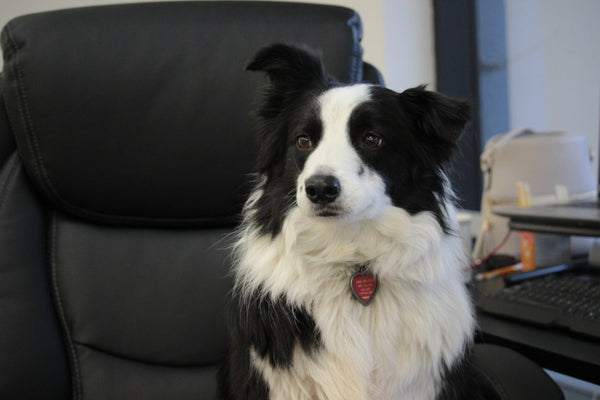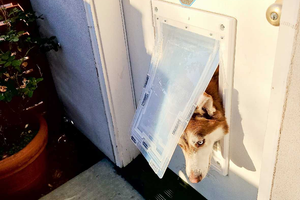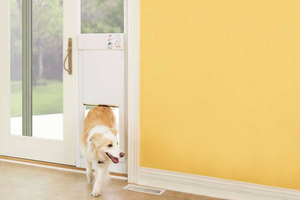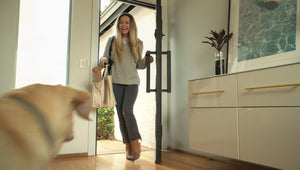Help Your Pet Cope with Separation Anxiety
Help Your Pet Cope with Separation Anxiety
Most pets are happy when their owners and family members return home. But, if your dog or cat is a little too excited about your return and greets you in a very energetic, panicked manner, he is most likely suffering from separation anxiety. We're here to discuss the signs of anxiety in dogs and to provide some tips on how to help an anxious dog with separation anxiety. You can use a few coping techniques to help ease separation anxiety in dogs and cats.
Signs of Anxiety
Wondering what the signs of separation anxiety in puppies are? Cats and dogs with separation anxiety display symptoms of anxiety in several ways. Your pet might react before you leave the home, after you leave, or when you return. Learning how to deal with separation anxiety is important for both you and your pet. According to the Humane Society of the United States, common signs of anxious behavior and symptoms of separation anxiety include:
• Attempting to scratch through doors
• Barking, meowing, whines and crying when you are about to leave the house and right after you leave
• Chewing on items while you are away, such as furniture and door frames
• Going to the bathroom in the house or outside of the litter box, even if house-trained
Typically, signs of separation anxiety occur when you aren't home and you leave your cat or dog alone. Your pet will most likely not have destructive behaviors like chewing on objects or urinating in the home when you are there. They may follow you from room to room, afraid that you will leave again. Here are a few general tips to help ease your pet into a less anxious state:
Coping Tip 1: Retrain Your Pet
If your pet begins to show signs of anxiety from your departure cues like the minute you pick up your purse, put on your jacket or open the door to leave, retrain him/her to not associate those actions with your departure. The American Society for the Prevention of Cruelty to Animals (ASPCA) recommends doing something you normally would before leaving, such as picking up your keys. Instead of exiting, engage in an activity in the home, such as watching TV or putting away the dishes. Over time, your pet will stop associating those actions with you leaving.
Coping Tip 2: Make Leaving a Good Thing

Another way to help ease your dog or cat's anxiety is to make your departure a pleasant experience for them. Have you ever thought about what dogs do all day? If they have no form of entertainment, it increases the likelihood that they will grow anxious awaiting your return. Puppy separation anxiety can worsen if your dog is left bored for extended periods of time. Before dog owners exit the home, give your pet a treat or puzzle toy that will keep them busy for an extended period of time and will cater to their dog needs. The treat will allow your pet to associate positive actions when their owner departs. You can also try dog separation anxiety toys such as Kongs, which can be filled with kibble or peanut butter to keep your dog occupied while you're away.
Coping Tip 3: Coming and Going Is No Big Deal
Help your pet cope with anxiety by not making a big deal out of leaving the home. Don't pet your doggy or cat anxiously before you head out or say goodbye to him, suggests dog trainer Cesar Milan. Instead, calmly gather your things and go. When you come back, wait a few minutes before you greet your pet.
If your dog is barking and jumping when you come home, it's important not to pet them during that time, according to the College of Veterinary Medicine at Texas A&M University. Pleasantly greeting your dog or cat when he/she is anxious awards the behavior you are trying to stop.
Medical Assistance
If your pet does show signs of anxiety, the ASPCA recommends bringing your pet to the veterinarian to rule out any other conditions. For example, if your pet suddenly starts urinating indoors, they may have diabetes or a urinary tract infection. Your pet's vet will provide a firm diagnosis. If the anxiety is very troublesome, the vet might prescribe your cat or dog anxiety medication to help ease their symptoms. When used with coping techniques, medicines such as clomipramine or fluoxetine can help your pet overcome anxiety.






